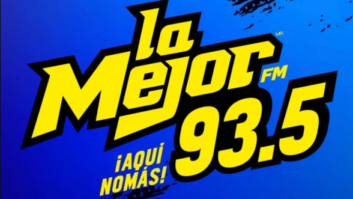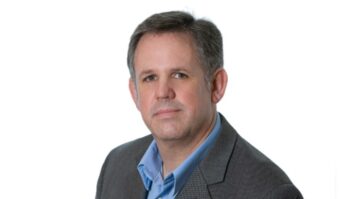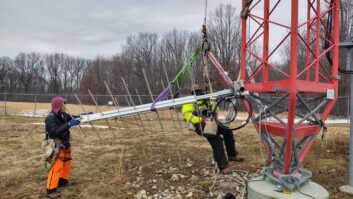The author is vice president of business development for Orban Labs. This article is from the ebook “STLs in the 21st Century.”
A long time ago, in a rack far far away, getting to and from a transmitter site was pretty easy. You tossed up a 950 MHz STL and fed composite (for FM) or audio (for AM), and away you went. You might have used equalized lines for an AM if you didn’t want to use an RF STL, but it wasn’t complex … certainly nothing to expend a lot of brain cells on.
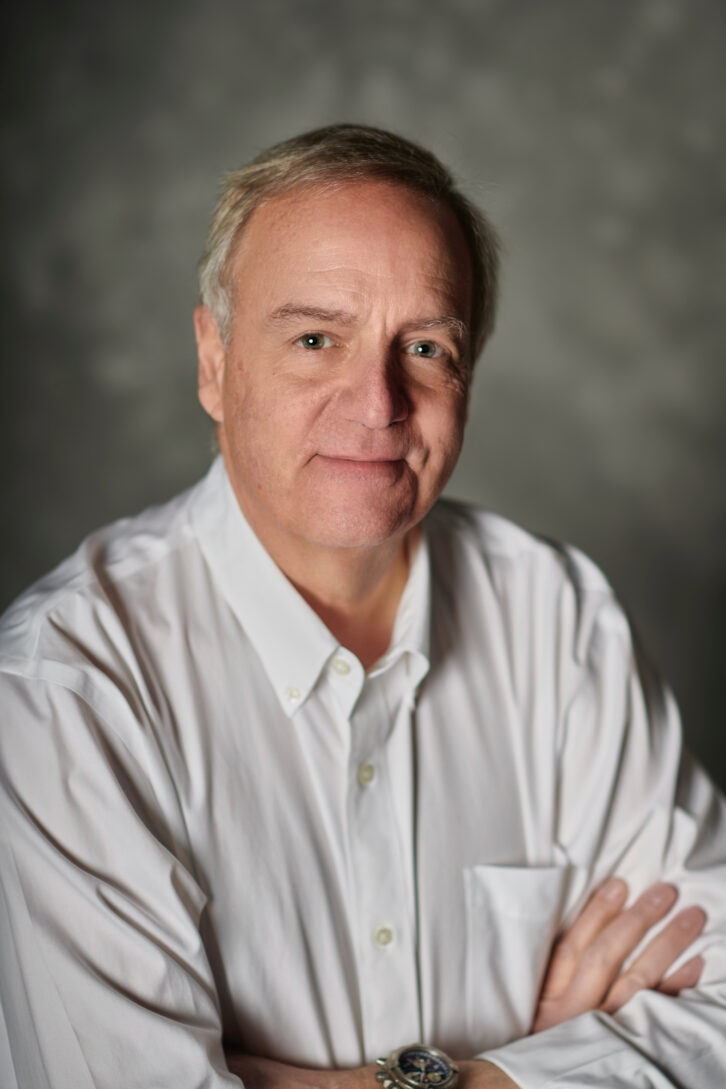
Inevitably things change. One of the big drivers of that change was HD Radio. Now FM broadcasters have to figure out how to get analog FM and its corresponding HD-1/2/3 E2X data “up the hill”— and that makes the old composite STL look mighty feeble. And then there are the further complications of consolidation and studio moves and perhaps needing to feed distant transmitter sites.
Many of the old options for higher bandwidth are no longer around, such as equalized lines, dry pairs, ISDN, T1 and so on.
Luckily, there are new options to help solve that “last-mile” dilemma. But before we jump in, we need to have a better understanding of what you need to ship and how much data you need to move.
Here are a few questions you need to ask yourself. Where are you going to insert EAS, and do you need to supply it with remote receiver(s) audio? Are you going to do the audio processing remotely or local? And what about remote control, monitoring and any backhaul?
But wait … there are more. Are you encoding Nielsen PPM? Are you doing local insertions? What about localized RDS?
And that leads us to the question of bandwidth. How much do you need? And that answer is usually “MORE!” —especially if you’re planning to operate in HD.
Now let’s look at your transmitter site. What’s available for you to use? Fiber? Switched Ethernet? Fast internet? Microwave? Or do you need to look at something more esoteric such as Starlink … C/Ku Band satellite … or 5G LTE (assuming you have enough bars of service and deep pockets)? Or “none of the above”?
It’s all about needed bandwidth vs. your options — and how much reliability you are willing to pay for.
Perhaps we can use a combination of solutions to improve reliability.
For example, we could backup fiber to 5G LTE using the capabilities of most LTE modems. Both Pepwave and Cradlepoint can be programmed to failover to LTE if the WAN port experiences an issue. But be aware that using 5G LTE as a primary for feeding a transmitter site can be very expensive. Carriers’ data plans need to be studied carefully. “Unlimited” plans may include throttling or surcharges.
But it’s certainly worth looking at and you can use that type of solution to back up just about any primary transmitter site feed, whether it’s microwave, StarLink dedicated switched Ethernet or something else. And all of these solutions are fully bidirectional, which makes hauling remote control and monitoring including audio easy.
I mentioned Starlink and I have personal experience with this: We looked at using it for a potential customer who had multiple sites across multiple states. I ran a consumer-version Starlink for 90 days running 20 Megabytes per second through it and had very few issues with it (less than a couple of seconds). Although I tested the consumer version, I would recommend the business version, which is more than capable of providing reliable primary STL service under the right circumstances. And, coupled with 5G backup, this might make sense for you.
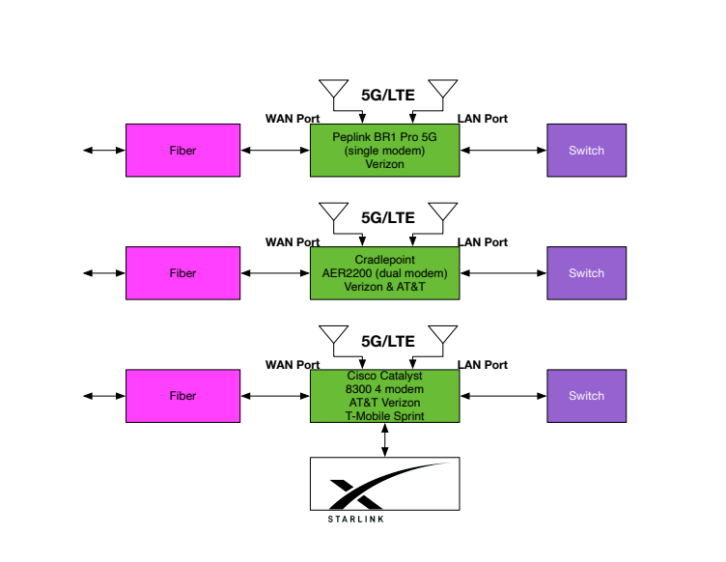
Case studies
Here’s a real-world example of a “last-mile” solution using another option, AT&T dedicated switched Ethernet service.
The KCSN/KSBR three-transmitter single-frequency network in southern California covers a population of 12 million people. They are sending Nielsen PPM encoded DMPX from an Orban 8700i at 192K/20 bits (via GPS locked Gates Air Intraplex) along with HD-1, HD-2 and HD-3 as E2X UDP. Those three circuits are bidirectional 10/20 MBps and have been up and running since 2017 with a single outage of one hour. The longest path is almost 80 miles between the KCSN and KSBR studios where it takes an IP-based microwave ride to the transmitter site. EAS is backfed from the KSBR studios via the return and inserted into the main program stream along with KCSN EAS. Cost? Less than $1,400 a month. They are going to add a fourth SFN transmitter this year covering Laguna Beach and they are looking at everything from Starlink to 5G to feed it. I will be out there for that project and will let you know what solution is chosen.
Here is another real-world last-mile solution. WCTS(AM) in Minneapolis/St. Paul needed to feed their remote AM transmitter site from their studios. With AM, processing is typically done at the transmitter site. WCTS has dual processing paths (primary and backup) with an Orban XPN-AM as primary and an Orban 9300 as backup.
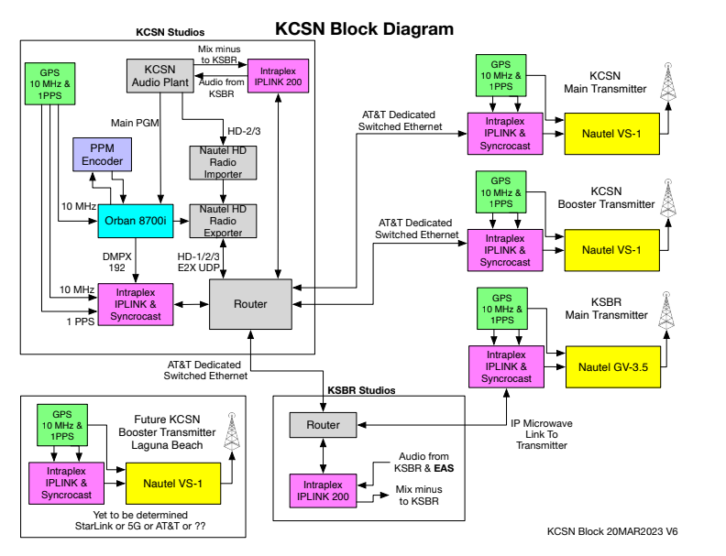
It gets interesting as the XPN-AM provides the Nielsen PPM encoding while the 9300 uses external PPM encoding located back at the studios. This requires a fair amount of switching hardware on both ends of the system to make work. The WCTS studios are analog (+4 dB) and the feeds to the AM site are digital, so there are A-to-D conversions being done in a couple of places to make all this work.
Remote control and monitoring for WCTS are handled as backhaul from the carriers. Initially they used CenturyLink DSL as a primary feed, with T-Mobile LTE as backup. They found intermittent dropout issues with the DSL and are now running Viasat VSAT as primary and CenturyLink DSL as backup.
And that brings us to (invariably) lossy compressed audio. If costs and bandwidth are an issue for you, the use of lossy compressed audio feeds might be worth looking at. Please note that most codecs do not “enjoy” 75 µsec pre-emphasis, which precludes sending remotely processed audio to the transmitter sites. And there will be peak control issues with the recovered audio to be dealt with. Unfortunately, these compromises could have an impact on your listenership, so that needs to be factored into your ROI.
So what do I recommend? My non-answer “answer” is: It depends. There are so many good options available. Broadcasters have a myriad of ways to solve last-mile problems. At the NAB Show we will be using a Pepwave MAX BR1 Pro 5G in Booth W2543 of the West Hall to solve our own “last-mile” problem for both our AM and FM processing demonstrations. We invite you to stop by to look at it.
The author recently hosted a webinar for the Society of Broadcast Engineers on “Last-Mile Solutions for Cloud-Based Broadcasting.”








